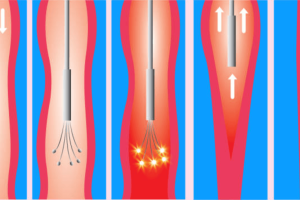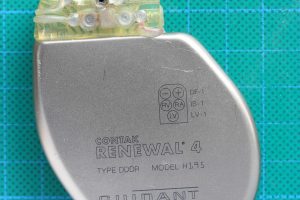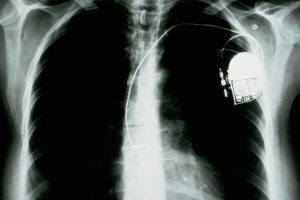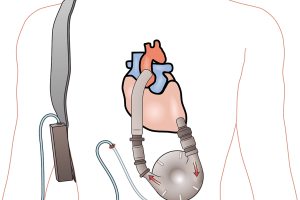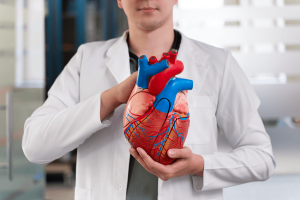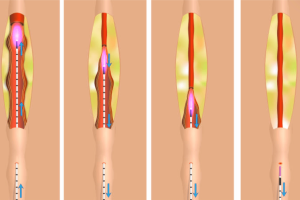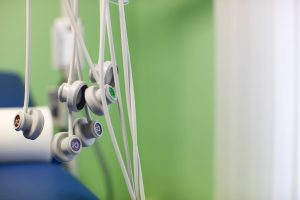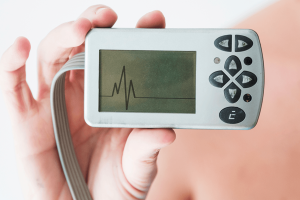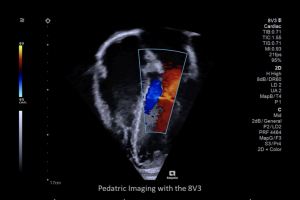The heart never takes a break. The heart is a strong muscle that never stops exercising, not for a minute. Every minute it needs blood, nourishment and oxygen. At Amarillo Heart Institute, we understand the importance of keeping your heart healthy and functioning at its best. We believe that a healthy heart is the foundation of a healthy life, and our goal is to provide you with all you need to achieve optimal heart health, a happier heart.
Cardiac Arrhythmias

Image by Freepik
Cardiac arrhythmias refer to any abnormal heart rhythms that deviate from the normal electrical conduction patterns of the heart. These abnormal rhythms can manifest in various forms, ranging from mild and benign to severe and life-threatening. In advanced cases, cardiac arrhythmias can lead to heart failure, stroke, or sudden cardiac death.
To understand arrhythmias at an advanced level, it is helpful to have a basic understanding of the normal electrical conduction system of the heart. The heart’s electrical system is responsible for initiating and regulating the heart’s contractions, ensuring that blood is efficiently pumped throughout the body. This system consists of several components, including the sinoatrial (SA) node, atrioventricular (AV) node, and the Purkinje fibers.

Image by Freepik
Cardiac arrhythmias refer to any abnormal heart rhythms that deviate from the normal electrical conduction patterns of the heart. These abnormal rhythms can manifest in various forms, ranging from mild and benign to severe and life-threatening. In advanced cases, cardiac arrhythmias can lead to heart failure, stroke, or sudden cardiac death.
To understand arrhythmias at an advanced level, it is helpful to have a basic understanding of the normal electrical conduction system of the heart. The heart’s electrical system is responsible for initiating and regulating the heart’s contractions, ensuring that blood is efficiently pumped throughout the body. This system consists of several components, including the sinoatrial (SA) node, atrioventricular (AV) node, and the Purkinje fibers.
In normal sinus rhythm, the SA node initiates an electrical impulse that travels through the atria, causing them to contract and pump blood into the ventricles. The impulse then passes through the AV node, which briefly delays it before sending it down to the ventricles via the Purkinje fibers, causing the ventricles to contract and pump blood out of the heart. Arrhythmias occur when there is a disruption in this normal electrical conduction system.
Types of Arrhythmias:
Atrial fibrillation (AFib): This is the most common type of arrhythmia, characterized by rapid and irregular electrical signals in the atria. AFib can lead to blood clots, stroke, and heart failure.
Ventricular tachycardia (VT): This is a rapid heart rhythm originating from the ventricles. In advanced cases, it can lead to ventricular fibrillation and sudden cardiac death.
Ventricular fibrillation (VF): This is a life-threatening arrhythmia characterized by chaotic electrical signals in the ventricles, causing them to quiver instead of contract effectively, leading to a lack of blood flow to the body.
Bradycardia: This is a slow heart rate, usually less than 60 beats per minute. In advanced cases, it can lead to syncope (fainting) or heart failure.
Supraventricular tachycardia (SVT): This is a rapid heart rate originating above the ventricles, and is usually not life-threatening, but can cause discomfort and shortness of breath.
Consequences of Arrhythmias:
- Pain or discomfort in the legs while walking, which is called claudication. This occurs because the reduced blood flow to the legs can’t meet the increased demand of the muscles during physical activity.
- Tissue damage or loss, which may lead to non-healing sores, ulcers, or gangrene in the affected limbs, resulting in amputation in severe cases.
- Increased risk of heart attack or stroke, as people with PAD often have atherosclerosis in other blood vessels, including those that supply blood to the heart and brain.
- Reduced quality of life due to the limitations of physical activity and the presence of chronic pain and discomfort.
Causes of Arrhythmias:
Heart disease: The most common cause of arrhythmias is underlying heart disease, such as coronary artery disease, heart valve disease, or cardiomyopathy. These conditions can damage the heart muscle or interfere with the heart’s electrical signals, leading to arrhythmias.
Electrical conduction system abnormalities: Abnormalities in the heart’s electrical conduction system can also cause arrhythmias. For example, abnormalities in the SA node can lead to sinus node dysfunction, while abnormalities in the AV node can lead to heart block.
Medications: Certain medications, such as beta-blockers, antiarrhythmic drugs, and some antibiotics, can cause arrhythmias in some people.
Electrolyte imbalances: Electrolytes, such as potassium, sodium, and calcium, play a critical role in regulating the heart’s electrical signals. An imbalance in these electrolytes can cause arrhythmias.
Genetic factors: Some arrhythmias are inherited and are caused by genetic mutations that affect the heart’s electrical system.
Lifestyle factors: Lifestyle factors such as excessive alcohol consumption, smoking, and drug use can increase the risk of arrhythmias.
Other medical conditions: Certain medical conditions, such as sleep apnea, hyperthyroidism, and diabetes, can increase the risk of arrhythmias.
It is important to note that in some cases, the cause of arrhythmias may be unknown. In these cases, the arrhythmia is referred to as idiopathic.
Identifying the underlying cause of arrhythmias is important for determining the most effective treatment options.
How to diagnose Arrhythmias:
Diagnosis of cardiac arrhythmias typically involves a combination of medical history, physical examination, and diagnostic tests, including:
Electrocardiogram (ECG): This is a non-invasive test that records the heart’s electrical activity and can help detect abnormal heart rhythms.
Holter monitor: This is a portable ECG device worn by the patient for a period of 24 to 48 hours, which can record the heart’s activity during normal activities.
Event monitor: This is a portable device that is worn for a longer period, such as a month, and is used to record the heart’s activity during symptoms.
Echocardiogram: This is an imaging test that uses sound waves to create pictures of the heart, which can help detect any structural abnormalities or damage.
Electrophysiology study (EPS): This is an invasive test that involves threading thin, flexible wires called catheters through a vein in the groin or arm and into the heart, to measure the heart’s electrical signals and locate the source of arrhythmia.
How to treat Arrhythmias:
Treatment for cardiac arrhythmias depends on the type and severity of the arrhythmia, as well as the underlying cause. Treatment options may include:
Medications: Medications may be used to control heart rate or rhythm, or to prevent blood clots in certain types of arrhythmias.
Ablation: This is a minimally invasive procedure in which a catheter is inserted into the heart and used to destroy the area of the heart tissue that is causing the arrhythmia. There are different Ablation procedures, depending on the type of arrhythmia: Ventricular Tachicardia Ablation, Watchman, Atrial fibrilation and Atrial Flutter, and more.
Pacemaker: A pacemaker is a small device implanted under the skin of the chest that sends electrical signals to the heart to regulate its rhythm.
Implantable cardioverter-defibrillator (ICD): This is a device similar to a pacemaker, but it can also deliver a shock to the heart to restore normal rhythm in case of a life-threatening arrhythmia.
Surgery: In some cases, surgery may be necessary to correct structural abnormalities or damage in the heart that are causing arrhythmias.
It is important to seek medical attention if you experience symptoms of cardiac arrhythmias, such as palpitations, lightheadedness, or fainting, as untreated arrhythmias can lead to serious complications. Your healthcare provider can perform a thorough evaluation and recommend the most appropriate treatment for your specific condition.
How to prevent Arrhythmias:
- Maintain a healthy lifestyle: Eat a balanced diet, exercise regularly, maintain a healthy weight, avoid smoking and excessive alcohol consumption.
- Manage underlying health conditions: Control conditions like high blood pressure, diabetes, and hyperthyroidism.
- Manage stress: Find ways to manage stress, such as through meditation, yoga, or other relaxation techniques.
- Take medications as prescribed: Follow your doctor’s instructions when taking medications for underlying conditions.
- Limit caffeine and stimulant intake: Limit your intake of caffeine and other stimulants.
- Monitor electrolyte levels: Monitor your electrolyte levels if you have an underlying condition that affects them.
- Regularly check your heart health: Schedule regular check-ups with your doctor to detect arrhythmias early on.

